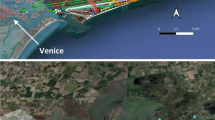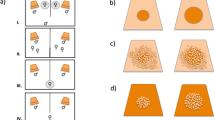Abstract
To investigate laying decision and clutch size determination in indeterminate layers, we analysed in-nest activity (nest presence, and copulation, prey deliveries, and entrance frequencies) and female body mass change, as well as their relation to clutch size variation in five Barn Owl pairs (Tyto alba) nesting in eastern France. Body mass of the female and behaviour [copulation frequency, entrance frequency, and prey delivery to the nest by the male (in number and mass)] were monitored using an automated weighing system and a video camera. There was a consistent change of behaviour and foraging activity among pairs ca. 18 days before laying indicating that the females may be tied to the nest at this time. Barn Owls being indeterminate layers have their clutch size determined at the oviposition of the first egg of the clutch. Window correlation analyses between the clutch size and the female body mass gain indicate that the clutch size might be determined no later than a few days before the laying of the first egg. Our results suggest that female Barn Owls may use the pre-laying period to determine the clutch size using cues such as the male food deliveries (a proxy for male quality).


Similar content being viewed by others
References
Baudvin H (1980) Les surplus de proies au site de nid chez la chouette effraie (Tyto alba). Nos Oiseaux 35:232–238
Daan S, Deerenberg C, Dijkstra C (1996) Increased daily work precipitates natural death in the kestrel. J Anim Ecol 65:539–544
Deerenberg C, Pen I, Dijkstra C, Arkies B-J, Visser GH, Daan S (1995) Parental energy expenditure in relation to manipulated brood size in the European kestrel Falco tinnunculus. Zoology 99:39–48
Dijkstra C, Vuursteen L, Daan S, Masman D (1982) Clutch size and laying date in the kestrel Falco tinnunculus: effect of supplementary food. Ibis 124:210–213
Durant JM (2002) The influence of hatching order on the thermoregulatory behaviour of barn owl Tyto alba nestlings. Avian Sci 2(3):167–173
Durant JM, Massemin S, Thouzeau C, Handrich Y (2000) Body reserves and nutritional needs during laying preparation in barn owls. J Comp Physiol B 170:253–260. doi:https://doi.org/10.1007/s003600050283
Durant JM, Gendner J-P, Handrich Y (2004a) Should i brood or should i hunt: a female barn owl’s dilemma. Can J Zool. doi: https://doi.org/10.1139/Z04-078
Durant JM, Massemin S, Handrich Y (2004b) More eggs the better: egg formation in captive barn owls. Auk 121:103–109
Green DJ, Krebs EA (1995) Courtship feeding in ospreys Pandion haliaetus: a criterion for mate assessment? Ibis 137:35–43
Handrich Y, Nicolas L, Le Maho Y (1993) Winter starvation in captive common barn owls: physiological states and reversible limits. Auk 110:458–469
Haywood S (1993) Sensory and hormonal control of clutch size in birds. Q Rev Biol 68:33–60
Högstedt G (1980) Evolution of clutch size in birds: adaptive variation in relation to territory quality. Science 210:1148–1150
Kalmbach E, Griffiths R, Crane JE, Furness RW (2004) Effects of experimentally increased egg production on female body condition and laying dates in the great skua Stercorarius skua. J Avian Biol 35:501–514
Kennedy ED (1991) Determinate and indeterminate egg-laying patterns: a review. Condor 93:106–124
Korpimäki E (1987) Timing of breeding of Tengmalm’s owl Aegolius funereus in relation of vole dynamics in western Finland. Ibis 129:58–68
Korpimäki E (1994) Rapid delayed tracking of multi-annual vole cycles by avian predators? J Anim Ecol 63:619–628
Marti C (1994) Barn owl reproduction: patterns and variation near the limit of species’ distribution. Condor 96:468–484
Martin TE (1987) Food as a limit on breeding birds: a life-history perspective. Annu Rev Ecol Syst 18:453–487
Meijer T (1988) Reproductive decisions in the Kestrel Falco tinnunculus. PhD thesis, University of Groningen
Meijer T, Drent R (1999) Re-examination of the capital and income dichotomy in breeding birds. Ibis 141:399–414
Nager RG (2006) The challenges of making eggs. Ardea 94:323–346
Nager RG, Monaghan P, Houston DC (2001) The cost of egg production: increased egg production reduces future fitness in gulls. J Avian Biol 32:159–166
Newton I (1979) Population ecology of raptors. Poyser, Carlton
Salamolard M, Butet A, Leroux A, Bretagnolle V (2000) Responses of an avian predator to variations in prey density at a temperate latitude. Ecology 81(9):2428–2441
Stearns SC (1992) The evolution of life histories. Oxford University Press, Oxford
Taylor I (1994) Barn owls: predator–prey relationships and conservation. Cambridge University Press, Cambridge
Trivers RL (1974) Parent–offspring conflict. Am Zool 14:249–264
Van Den Burg AB (2002) A comparison of nutrient allocation in eggs of barn owls Tyto alba and Eurasian sparrowhawks Accipiter nisus. Ardea 90:269–274
Visser M, Lessells C (2001) The costs of egg production and incubation in great tits (Parus major). Proc R Soc Lond B 268:1271–1277
Walsberg GE (1983) Avian ecological energetics. In: Farner DS, King JR, Parkes KC (eds) Avian biology, vol 7. Academic, New York, pp 161–220
Wijnandts H (1984) Ecological energetics of the long-eared Owl (Asio otus). Ardea 72:1–92
Williams GC (1966) Natural selection, the cost of reproduction, and a refinement of Lack’s principle. Am Nat 100:687–690
Woodburn RJW, Perrins CM (1997) Weight change and the body reserves of female blue tits, Parus caeruleus, during the breeding season. J Zool 243:789–802
Acknowledgments
This study was supported financially by the Ministère de l’Environnement, Service de la Recherche des Etudes et du Traitement de l’Information sur l’Environnement, France. The experiments were done in compliance with current French laws and after acceptance by French authorities (authorisation of the Ministère de l’Agriculture et de la Pêche, Nb. 04196). We thank C. Plumeré for help in developing the automatic nest and M. and B. Bertrand for the maintenance of the system. We are grateful to J. Lage of Jensen Software Systems (http://jensen-software.com) for his computer expertise. We also thank J.-F. Le Galliard, D.Ø. Hjermann, V. Penteriani and three anonymous referees for their useful comments on our manuscript.
Author information
Authors and Affiliations
Corresponding author
Additional information
Communicated by T. Friedl.
Electronic supplementary material
Below is the link to the electronic supplementary material.
Rights and permissions
About this article
Cite this article
Durant, J.M., Gendner, JP. & Handrich, Y. Behavioural and body mass changes before egg laying in the Barn Owl: cues for clutch size determination?. J Ornithol 151, 11–17 (2010). https://doi.org/10.1007/s10336-009-0415-1
Received:
Revised:
Accepted:
Published:
Issue Date:
DOI: https://doi.org/10.1007/s10336-009-0415-1




